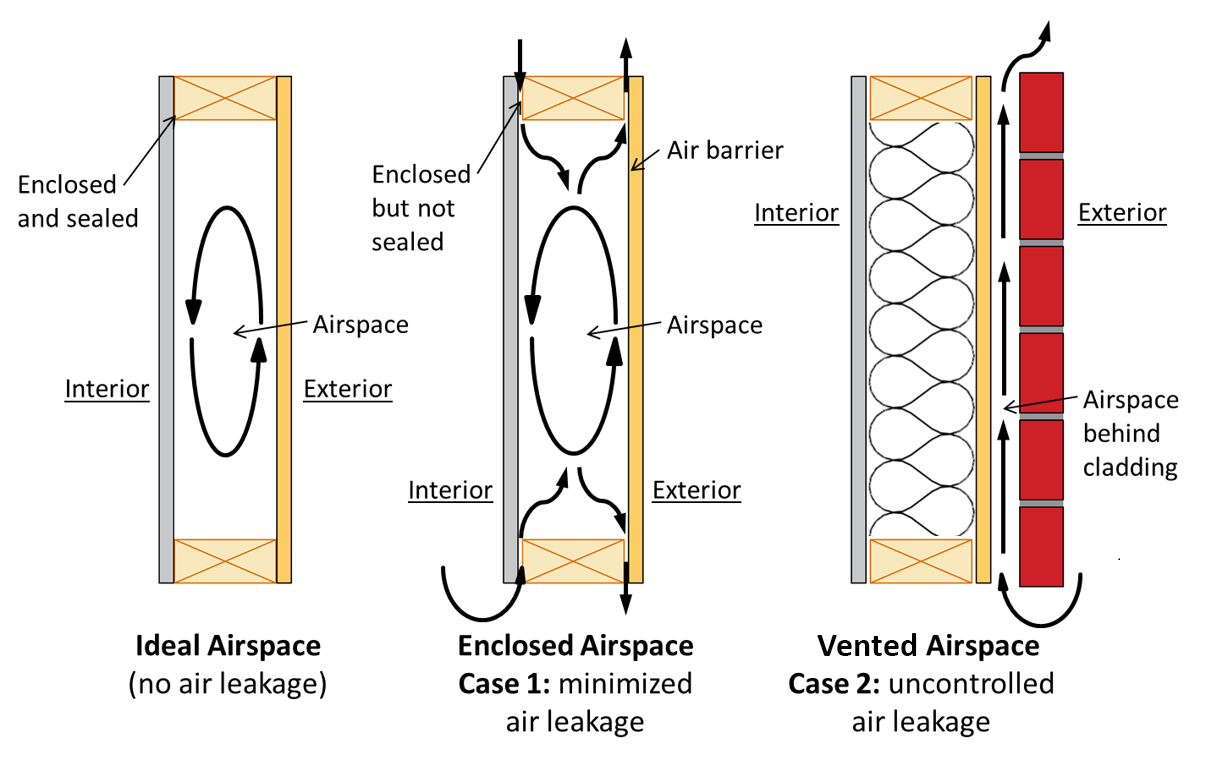
The presence of an airspace enclosed within a building envelope assembly is known to contribute to the overall thermal performance of the assembly. However, the actual R-value of an airspace can vary significantly depending on various conditions of use, such as the air-tightness of the assembly of materials enclosing an airspace. Also, its effective R-value contribution is generally small in comparison to conventional insulation materials and methods, even when a reflective airspace is used. An airspace by itself, therefore, is incapable of providing adequate, code-compliant thermal performance for modern building thermal envelope assemblies.
Top Resources:
- ABTG Research Report
- Educational Program
- Design Guide
This guide reviews current technical knowledge and regulatory requirements to assist the designer in R-value characterization and limitations of use for airspaces within building assemblies for code compliance.
Before specifying a product, approving a building plan for permit, providing a building energy rating, or giving a “pass” on a field inspection, it is important to verify that materials providing the foundation for energy code compliance have a proper basis for any claimed or labeled R-value. Things may not actually be as they first appear. This Quick Guide provides some relevant background and important questions that can assist in ensuring that R-value data for insulation and other building products are valid.
Joe Lstiburek provides grounding insight on the do’s and don’ts of thermal resistance compliance.
The presence of an airspace enclosed within a building envelope assembly is known to contribute to the overall thermal performance of the assembly. But, the actual R-value of an airspace can vary significantly depending on various conditions of use, such as the air-tightness of the assembly of materials enclosing an airspace.
This guide details the two main steps to evaluating the airspace R-value: (1) How to determine the type of airspace in the wall assembly and (2) How to determine the R-value for each type of airspace.